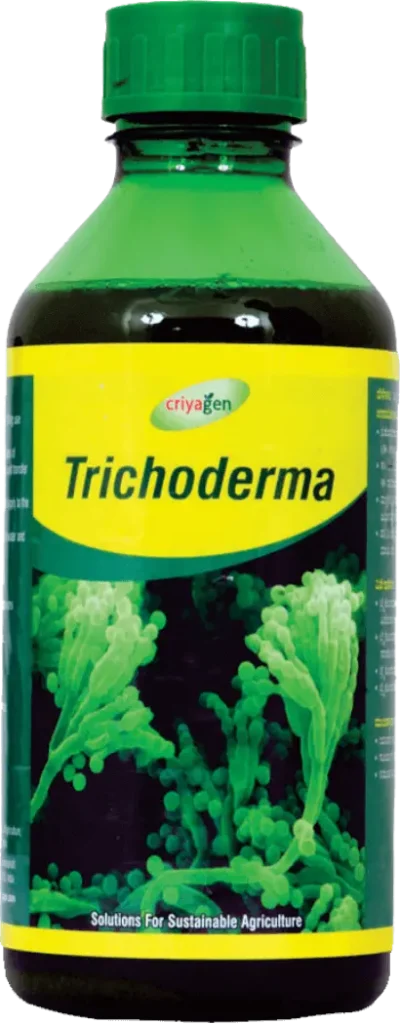Indian agriculture is subjected to various kinds of pollution due to the extensive use of chemicals such as pesticides, fungicides and fertilisers. From planting seeds to harvesting crops, these chemicals play a significant role in ensuring the well-being of the crops. However, here’s the irony: while they’re meant to boost agricultural well-being, they’re actually having a negative impact on it. This is where Trichoderma or any such bio-pesticides come into the picture.
Food Safety and Standards Authority of India (FSSAI) shared findings from field inspections carried out from October 2022 to March 2023. The results were eye-opening: pesticides were found in 35.64% of the samples tested. Specifically, 32.31% of vegetable samples, 44.2% of fruit samples, 66.67% of spice samples, and 50% of dried fruit samples contained toxic substances.
This is why it’s crucial to look for alternative ways to protect our crops. Among the options, using harmless microorganisms is an excellent choice. Trichoderma, this non-pathogenic microorganism, is a game-changer in green technologies. Why? Because it offers incredible biofertilisation and biostimulatory benefits. Essentially, Trichoderma is our best bet for enhancing plant growth and health, naturally.
Let’s Get to Know Trichoderma Better

Trichoderma is a biological fungus effectively used for pest control. You can find these friendly fungi in soil, air, on plants and in other places in nature. This green warrior is most effective in controlling soil-borne diseases of various crops, along with some leaf and spike diseases. But how exactly does this fungus help plants in their battle against pathogenic fungi?
Understanding the Mechanism of Trichoderma
Trichoderma is a friend every plant should have. It’s a type of endophytic fungus, which means it lives inside plant tissues. This relationship is a win-win: the fungus helps the plant without causing harm or disease.

Trichoderma makes its home in the outermost layers of the roots. This happens because of a plant’s defence mechanism triggered by salicylic acid. This defence stops the fungus from reaching the plant’s inner transport systems and becoming a harmful pathogen. In doing so, it also boosts the plant’s own defences against pests and diseases. It’s like having a guardian living right at the doorstep of the roots, always ready to protect its host plant.
Trichoderma in Agriculture

Trichoderma plays a big role in farming. There are different ways to use Trichoderma spores on crops. You can treat seeds or planting materials you’re going to plant with it before even planting them. You can also mix it into the soil when you’re planting seeds or moving plants around. Another way is to water your plants with it or use it as a root drench or dip. The best results, though, come from putting it directly on seeds and roots. This method really helps the Trichoderma to settle in and do its job.
Trichoderma: A Shield Your Crop Deserves
When we think about what happens when Trichoderma is applied, it’s mainly because it interacts in three ways: hyperparasitism, competition and antibiosis. In short, it’s about fighting for resources and changing the environment to stop other fungi from growing
Trichoderma has become a go-to solution for fighting a range of plant diseases. It’s particularly effective against some serious threats, such as cotton wilt, grey mould in crops like tomatoes and potatoes, and root rot in tobacco plants, to name a few.
What stands out is Trichoderma’s effectiveness in vegetable farming, with tomatoes showing remarkable improvements. However, its benefits extend far beyond just tomatoes. It has shown positive effects on various crops, including peanuts, wheat, sugarcane, and many more, enhancing their growth and resilience. It’s fascinating to see how this fungus can support so many different plants, helping to keep our food supply secure and healthy.
Seed Treatment: A Strong Start
Before planning to sow the seeds in the field, give them the Trichoderma care they deserve.
Mix 6 ml of Trichoderma viridae with 50 ml of water. With this mixture, you can gently coat 1 kg of seeds evenly.
Allow the seeds to dry in a shaded area for 20–30 minutes before planting.
This strengthens the foundation for your crops and protects them from all the enemies coming their way.
Foliar Spray: A Leafy Lifeguard
As your crops grow, they are more likely to attract pathogens, making spraying at this stage crucial.
Dilute 4 ml of Trichoderma in 1 litre of water and spray this solution directly onto the leaves, covering them evenly.
Soil Application: Nourish the soil
Apply 2 litres of Trichoderma mixture per acre of soil.
This application enriches the soil, making it a more vibrant and supportive foundation for your plants’ growth.
Plant Growth Promoting Properties of Trichoderma
Including Trichoderma in your crop life cycle is all about giving your plants the complete package, right from protecting them from pests and diseases to helping in growth. They promote growth, improve root structure and condition, enhance seed germination and viability, and increase photosynthesis efficiency, flowering and yield quality.

Bioremediation and Phytoremediation
Trichoderma is truly versatile, as its advantages are not limited to crop protection and growth. As guardians of the soil, it ensures the soil remains healthy.
Trichoderma has the potential to alleviate contaminants by acting on chemicals and metal contaminants through the activity of various enzymes, improving both the physical and chemical properties of the soil. It has shown tolerance to and accumulation of heavy metal contaminants like Ni, Cd, Zn, Pb, and As. Inoculating soil with Trichoderma has been reported to degrade chemical pollutants and make nutrients available to plants from those agrochemicals as well
Trichoderma is an organic solution for sustainable agriculture that enhances plant growth and soil health while reducing reliance on chemicals. Using this fungus in farming practices is a commitment to sustainability and organic farming, paving the way for a healthier and more sustainable future in agriculture.
Read about how Bio-Maxx can improve your yields organically.